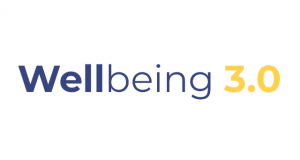Resources
Books by Vic Strecher
Life On Purpose
How Living For What Matters Most Changes Everything
Victor Strecher, an award-winning pioneer in the field of behavioral science and professor at the University of Michigan School of Public Health, lost his nineteen-year-old daughter, Julia, to a rare heart disease that resulted from an infant case of chicken pox. This life event challenged every aspect of Strecher’s personal and professional experience and drove him to an exhaustive search, from ancient philosophy to cutting-edge science, to pinpoint the potential and impact of purpose in our lives. What is it? How can we discover it? And what does the latest research tell us about the importance of how purpose affects our overall health and happiness?
On Purpose: Lessons In Life and Health From The Frog, The Dung Beetle, and Julia
Vic’s experience of being “broken open” (to take bestselling author Elizabeth Lesser’s phrase) set him on a life transforming journey through ancient and modern philosophy, literature, psychology, neuroscience, and Egyptology. Along the way, Vic was introduced to an unlikely role model: a six-legged superhero whose unique relationship with a ball of excrement forever altered Vic’s outlook. A self-help guide, college lecture, confessional, and time-travel adventure all rolled into one, On Purpose uses a beautiful, fantasy-fueled, graphic novel format to tell a story of self-discovery and personal growth that leaves an indelible impression.
The following scientific research shapes how Kumanu helps forward-thinking organizations create purpose in action.
Meaningful Work
The study followed two groups—health care workers and service workers—to see the effects of transformational leadership and meaningful work. Meaningful work was found to be positively correlated with psychological well-being and transformational leadership “was associated with finding a ‘higher purpose’ in the work.”
Arnold, K. A., Turner, N., Barling, J., Kelloway, E. K., & McKee, M. C. (2007). Transformational leadership and psychological well-being: the mediating role of meaningful work. Journal of Occupational Health Psychology, 12(3), 193–203.
Employee Engagement
This study explores the interaction between engagement, meaningful work, and purpose. The authors argue that engagement should be reframed within the context of the meaning and purpose of the work one does. They found that having work that an employee feels is meaningful and purpose-driven leads to employees engaging more with their work and having better performance.
Shuck, B., & Rose, K. (2013). Reframing Employee Engagement Within the Context of Meaning and Purpose: Implications for HRD. Advances in Developing Human Resources, 15(4), 341–355.
Life Balance
Researchers uncovered correlations between various factors and a Purpose in Life (PIL) test. High scores on the PIL test (that is, employees self-reporting living more purpose-driven lives) were positively correlated with finding enjoyment in work and being more satisfied in life. People who scored higher on the PIL test also typically had less work-life conflict.
Bonebright, C. A., Clay, D. L., & Ankenmann, R. D. (2000). The relationship of workaholism with work–life conflict, life satisfaction, and purpose in life. Journal of Counseling Psychology, 47(4), 469–477.
Employee Retention
208 employees from seven different organizations were surveyed to determine some causes and effects of meaningful work. Meaningful work was found to be positively correlated with organizational commitment and job satisfaction. It was also found to be negatively correlated with intentions to quit.
Scroggins, W. A. (2008). Antecedents and Outcomes of Experienced Meaningful Work: A Person-Job Fit Perspective. Journal of Business Inquiry, 7(1), 68–78.
Intrinsic Motivation
This article explores the levels of motivation in the workforce and discovers a deeper level of intrinsic motivation that lies at the intersection of purposeful, meaningful work, commitment, and engagement. The authors suggest that before an employee “can bring the whole self to work, one has to first be aware of one’s own values, beliefs, and purpose in life.”
Chalofsky, N., & Krishna, V. (2009). Meaningfulness, Commitment, and Engagement: The Intersection of a Deeper Level of Intrinsic Motivation. Advances in Developing Human Resources, 11(2), 189–203.
Resilence
This study asserts that “a clear sense of purpose… [contributes] to a capacity for resilience” and “can also contribute to developing organizational change strategies.” By communicating a sense of organizational purpose, the authors suggest that HR professionals can better analyze and respond to changes in environmental conditions.
Lengnick-Hall, C., Lengnick-Hall, M., & Beck, T. (2011). Developing a capacity for organizational resilience through strategic human resource management. Human Resource Management Review, 21(3), 243–255.
Financial Performance
After surveying 500,000 employees across more than 400 firms, these researchers discovered that just being “purpose-driven” is not enough to increase financial performance- this sense of purpose must be clearly communicated throughout the organization. The impacts of purpose-driven organizations are more pronounced when middle-level workers are purpose-driven, too, not just managers and C-suite executives.
Gartenberg, C., Prat, A., & Serafeim, G. (2016). Corporate Purpose and Financial Performance. Harvard Business School Working Papers, No. 17-023.



